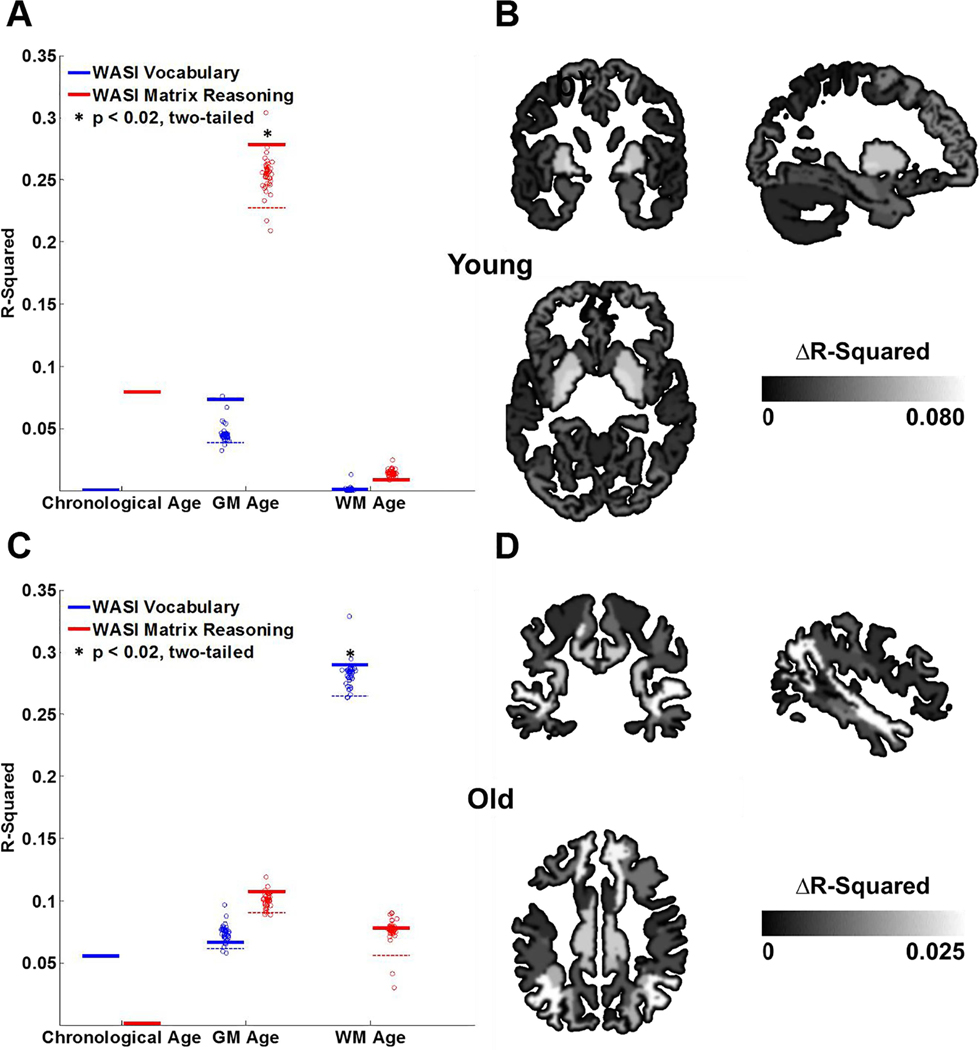Fig. 3.
Gray matter (GM) and white matter (WM) age score associations with fluid and crystallized abilities (as measured by WASI matrix reasoning and WASI vocabulary tasks, respectively) in younger and older adults. (A) Solid lines show the R2 of the associations with intelligence measures for whole brain WM and GM age scores. The dashed lines show the 5-percentile limit for the distribution of R2 estimates, each obtained after excluding one tissue sub-regions from the analysis. A region was considered relevant when its exclusion from the model resulted in a drop in R2 estimate below this limit. Whole-brain GM age scores significantly contributed to predicting fluid ability in younger adults (p < 0.02, two-tailed). (B) Putamen and pallidum GM sub-regions significantly contributed to these effects in younger adults (< 5 percentile, ΔR2 > 0.06, Supplementary Table 5). (C) Whole-brain WM age scores significantly contributed to predicting crystallized ability in older adults (p < 0.02, two-tailed). (D) WM sub-regions nearby inferior parietal lobule and superior temporal gyrus significantly contributed to these effects in the older adults (< 5 percentile, ΔR2 > 0.025, Supplementary Table 6).

